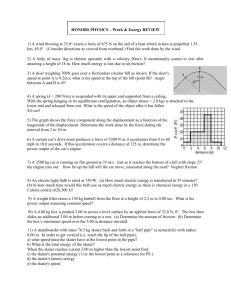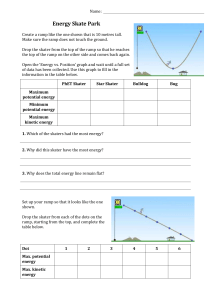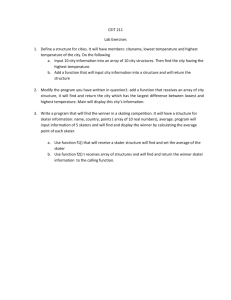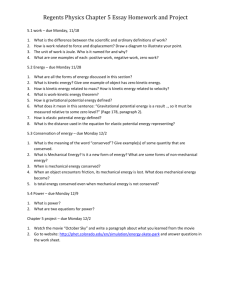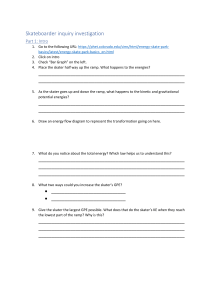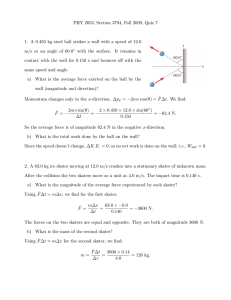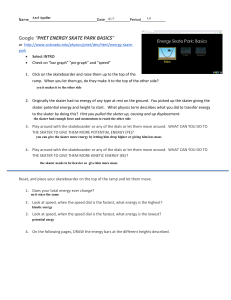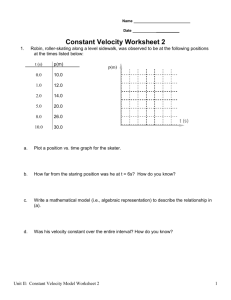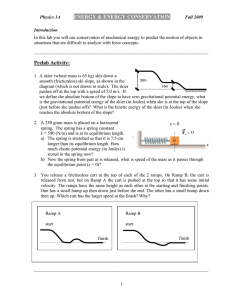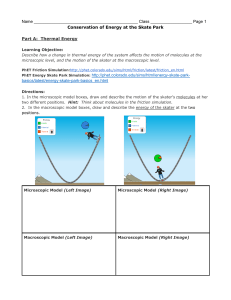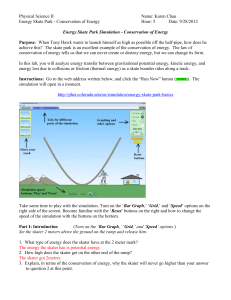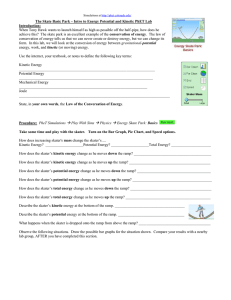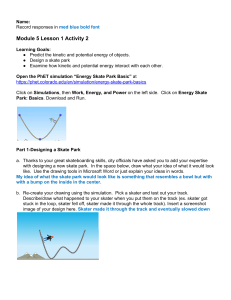theoretical
advertisement
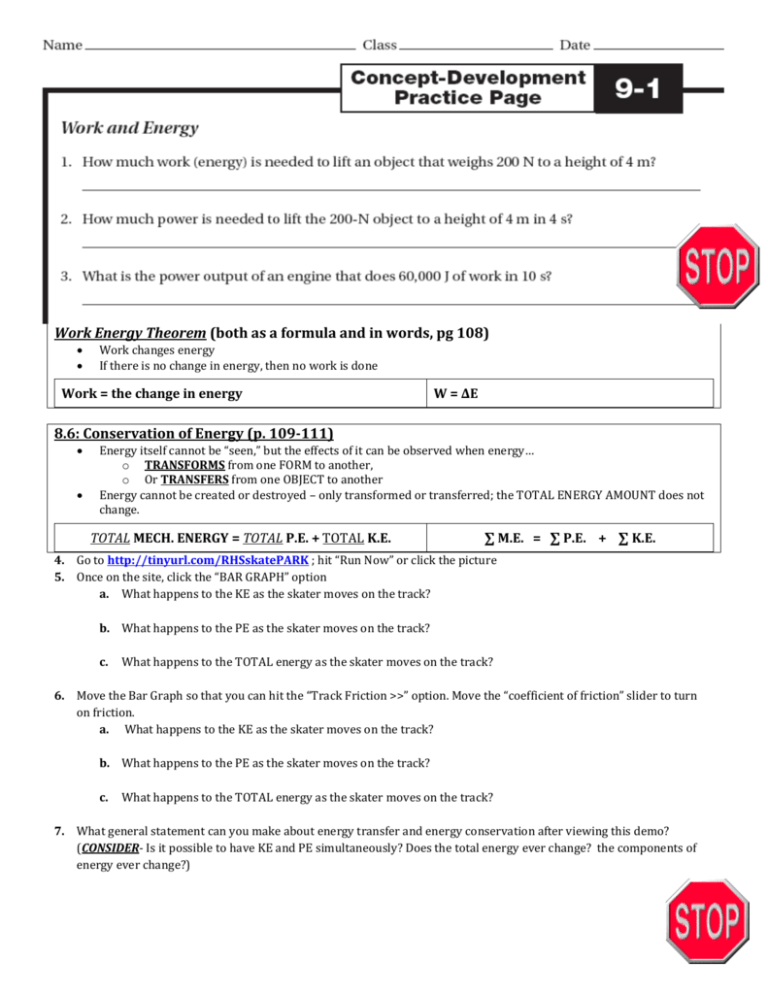
Work Energy Theorem (both as a formula and in words, pg 108) Work changes energy If there is no change in energy, then no work is done Work = the change in energy W = ΔE 8.6: Conservation of Energy (p. 109-111) Energy itself cannot be “seen,” but the effects of it can be observed when energy… o TRANSFORMS from one FORM to another, o Or TRANSFERS from one OBJECT to another Energy cannot be created or destroyed – only transformed or transferred; the TOTAL ENERGY AMOUNT does not change. TOTAL MECH. ENERGY = TOTAL P.E. + TOTAL K.E. ∑ M.E. = ∑ P.E. + ∑ K.E. 4. Go to http://tinyurl.com/RHSskatePARK ; hit “Run Now” or click the picture 5. Once on the site, click the “BAR GRAPH” option a. What happens to the KE as the skater moves on the track? b. What happens to the PE as the skater moves on the track? c. What happens to the TOTAL energy as the skater moves on the track? 6. Move the Bar Graph so that you can hit the “Track Friction >>” option. Move the “coefficient of friction” slider to turn on friction. a. What happens to the KE as the skater moves on the track? b. What happens to the PE as the skater moves on the track? c. What happens to the TOTAL energy as the skater moves on the track? 7. What general statement can you make about energy transfer and energy conservation after viewing this demo? (CONSIDER- Is it possible to have KE and PE simultaneously? Does the total energy ever change? the components of energy ever change?) Use the diagrams and captions to help you answer the questions on this page. Machines include levers, pulleys, ramps, screws, etc. They cannot change the energy output, which means they cannot change the work output! (they make job EASIER because they change the FORCE required) The block of ice in the diagram below weighs 500 N. 8. How much work would be required to LIFT it straight up to the top of the ramp? 9. How much force would be required to PUSH it up the ramp? 10. How much work would be required to PUSH it up the ramp? 11. Which method (lifting or pushing) requires more FORCE? ________________ 12. Which method (lifting or pushing) requires more WORK? ________________ 13. Explain what advantage simple machines (like ramps) have in terms of WORK-ENERGY THEOREM, and ENERGY CONSERVATION 14. All of the ramps are 5m high. They all have had identical boulders placed at the top of them. (HINT see diagram to the right) A. Case A had the boulder pushed off the side of the cliff B. Case B had the boulder pushed down the ramp C. Case C had the boulder pushed down the ramp, which was a longer ramp than B Rank the cases from least to greatest in terms of the KE the boulders have in the pictures below. If they are equal, separate with “=” ______ ________ ________ Least Greatest 17. A rollercoaster starts from rest at Point A. What happens to its Potential Energy as it falls from 25 m to 3 m? 18. The rollercoaster continues from 3m up to 16 m. How does the Potential Energy at Point A compare to this 16 m high hill? 19. Why don’t bouncy balls bounce as high in the 2nd bounce as they do in the first?
